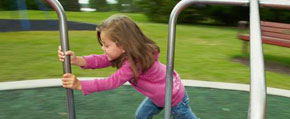We are pleased to announce an exciting new alliance between Active Living Research and GP RED to co-host and coordinate...
Neighborhood Design and Children’s Outdoor Play: Evidence from Northern California
Handy, S., Cao, X., & Mokhtarian, P. L. (2008). Neighborhood Design and Children’s Outdoor Play: Evidence from Northern California. Children, Youth and Environments, 18(2), 160-179.
Today’s children are spending less of their free time outdoors in the neighborhood, with negative consequences for health. Neighborhood design has attracted attention for both its contribution to the problem and its potential as a solution. However, relatively few studies have examined the causal relationship between neighborhood design and children’s outdoor play. This study uses data from a 2003 survey of a random sample of households from eight Northern California neighborhoods. Using a quasi-longitudinal design, we apply ordered probit models to examine the effect of neighborhood characteristics on children’s outdoor play while controlling for neighborhood preferences. The results provide support for a causal relationship between neighborhood design and outdoor play and point to cul-de-sacs, larger front yards, lower crime, and increased interaction among neighbors as key characteristics that influence outdoor play by increasing parents’ perceptions of safety.
Related Tools & Resources
STAY UP TO DATE
RECENTLY ADDED TOOLS & RESOURCES
MOVE! A BLOG ABOUT ACTIVE LIVING
The "Active Living Conference" aims to break down research and practice silos and...







